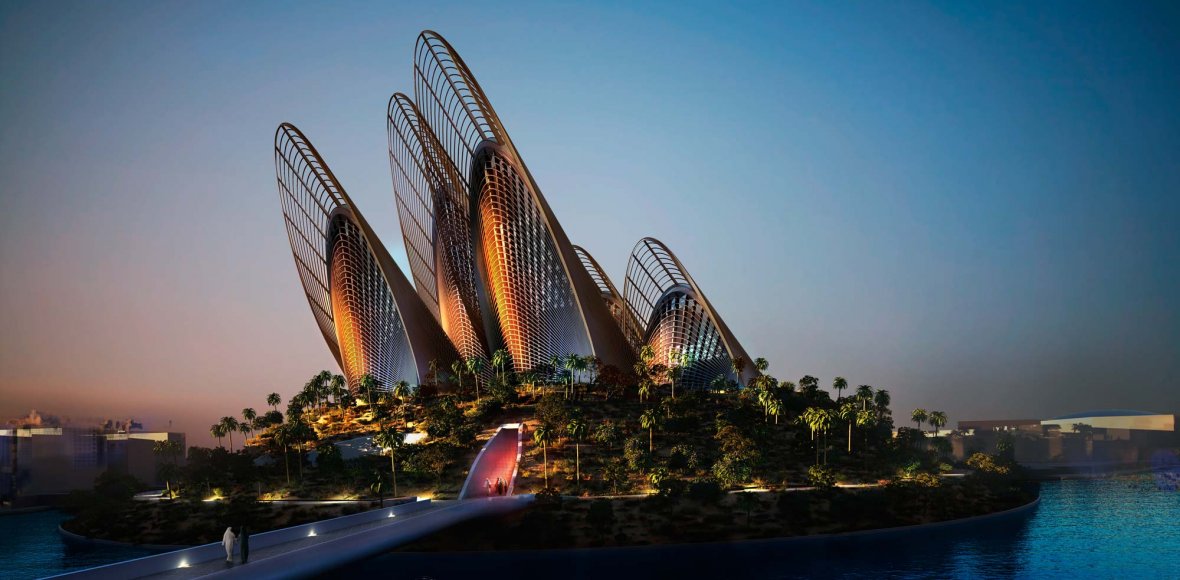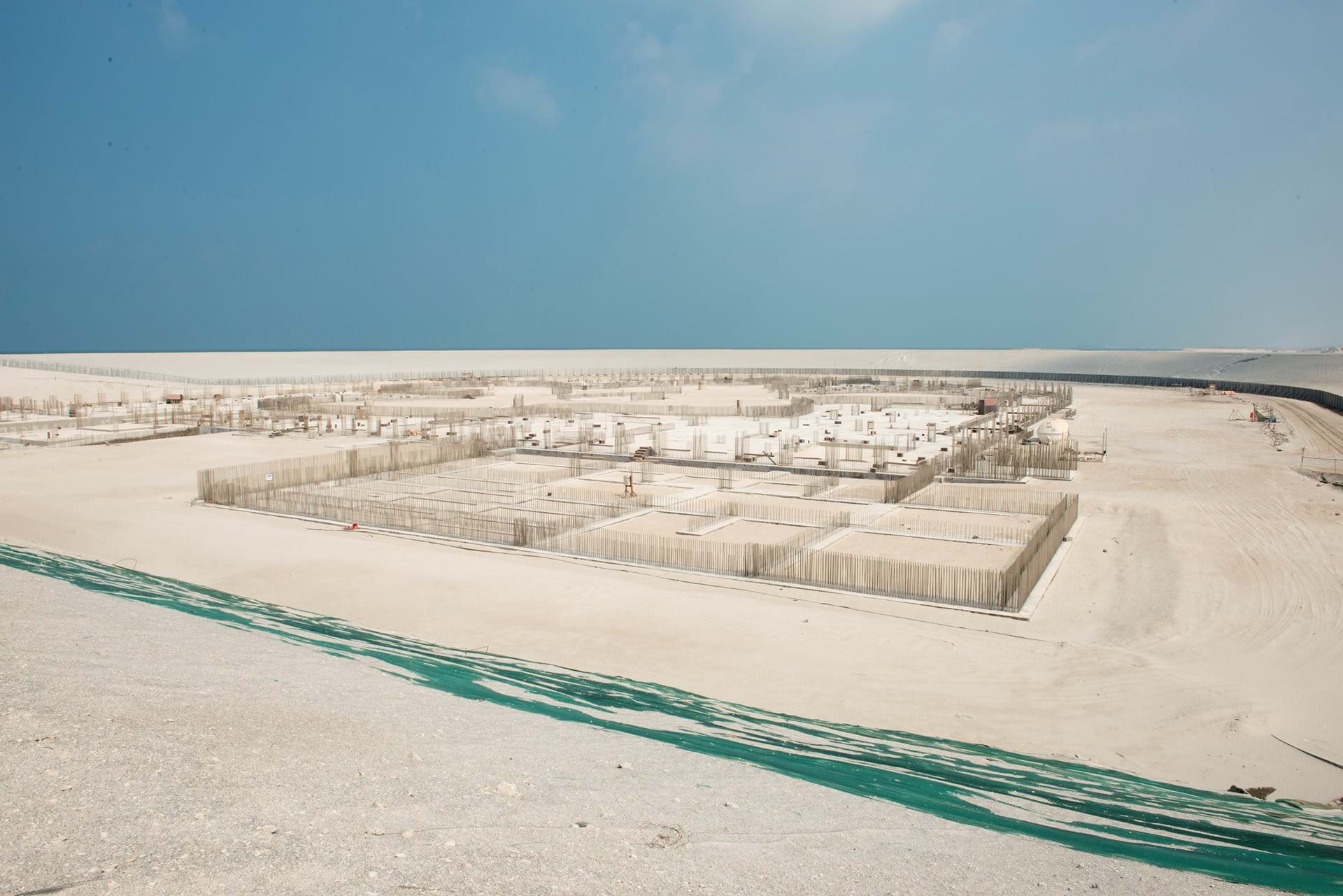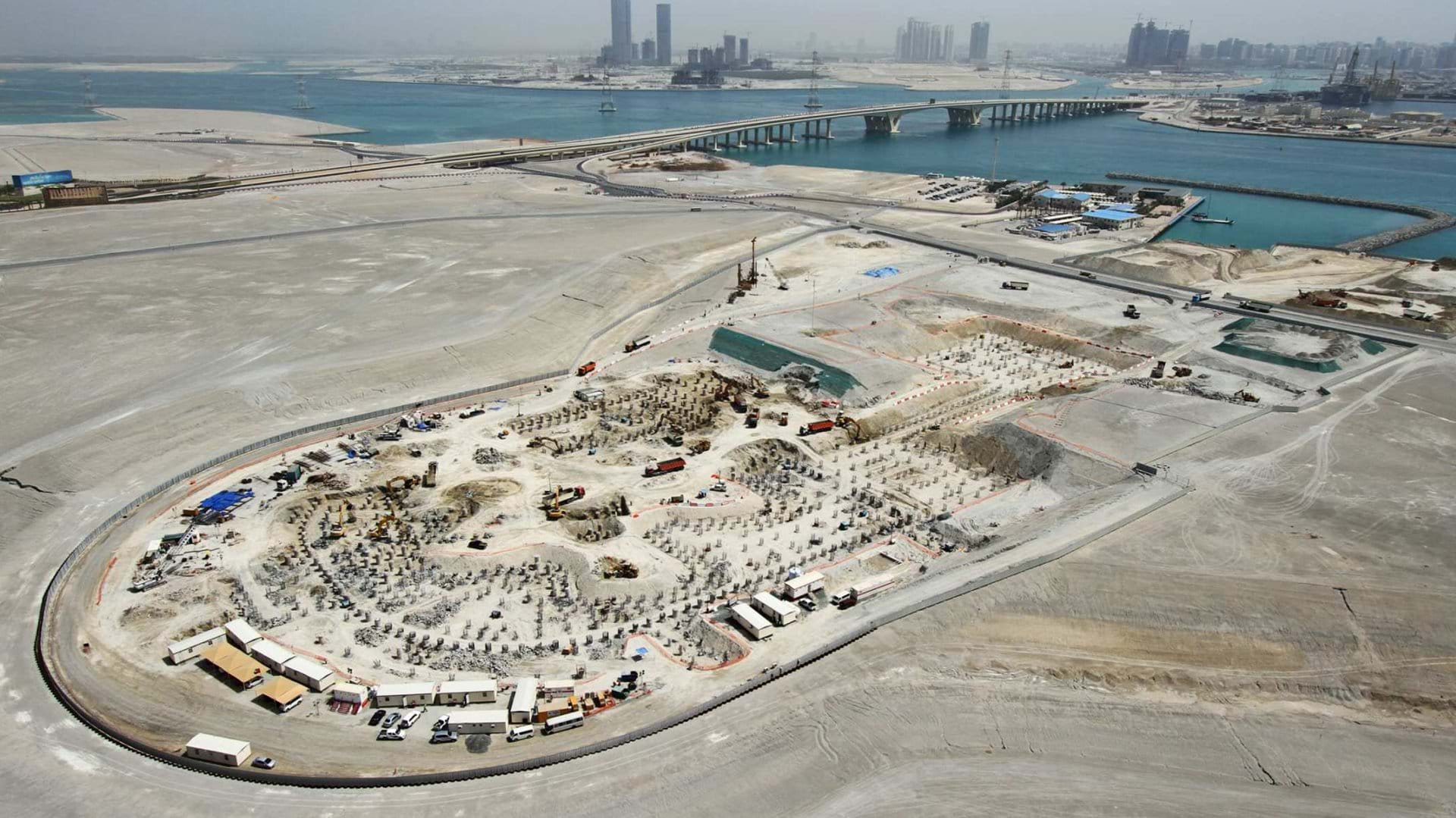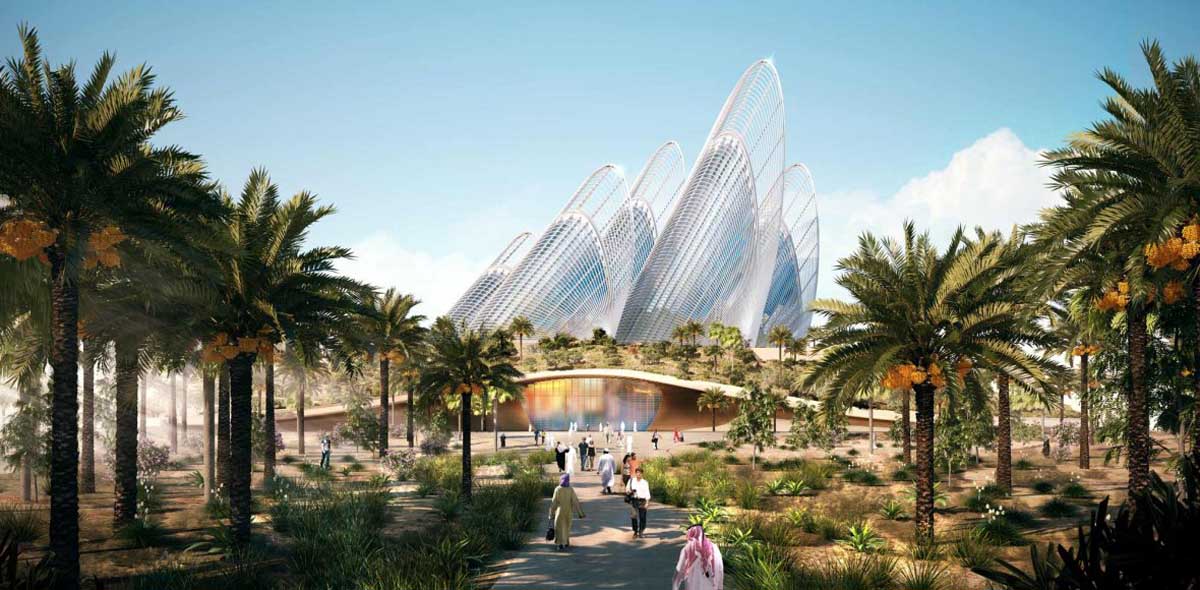Set to open in 2021, The Zayed National Museum in Abu Dhabi is under construction in the Saadiyat Island Cultural District, north-east of the capital.
The 44,000m2 museum, designed by landscape architect Atelier Dreiseitl and Pritzker Prize-winning architect, Foster + Partners, will tell the story of Sheikh Zayed bin Sultan Al Nahyan, celebrating his life and achievements and also educate visitors on the history, culture and geography of the UAE.
The distinctive ‘five wings’ design aims to combine contemporary architecture with the curves and swirls of traditional Arabic design. It is also a metaphor for the former leader’s love of falconry, with the towers shaped like wing tips of the falcon, soaring over the palm trees clustered around its landscaped dome.
Foster + Partners enlisted their complex geometry team to aid the design of the free-form wings, maximising aerodynamic stability and pinpointing areas of weakness. Each steel wing rises up to an altitude of 125 meters.

In a practical sense, all elements of the building were centred on the need to efficiently provide daylight and cooling in a harsh, arid environment. The wings each serve a separate gallery pod below, but there is no direct connection, allowing a free zone around the circumference through which light can pass. The arches and columns of the podium are carefully moulded to direct the sunlight, providing areas of shade and illumination.
An innovative air conditioning system also makes use of the ground temperature, drawing fresh air through ground-cooling pipes and then releasing them into the museum’s lobby. As the steel heats up in the sun, the wings begin to act as thermal chimneys and a passive stack effect draws the air currents up through the building.
The museum consists of seven permanent galleries located at the base of each tower as well as an exclusive exhibition program where you can look into the history, heritage, and culture of the UAE. Each gallery is inspired by the ideals of Sheikh Zayed bin Sultan Al Nahyan like his belief in education, heritage, conservation and culture, all derived from his humanitarianism and deep faith in the ideals of his country and men.
The core gallery is ‘Sheikh Zayed: Life and Times’, while the ‘Falconry and Conservation Gallery’ will focus on Sheikh Zayed’s passion for nature, conservation, and falconry, with a special indoor area dedicated to a live display of hunting birds, one of the many hobbies of the Sheikh.
Other galleries include the ‘People and Heritage Gallery’, the ‘History and Society Gallery’, the ‘Science and Learning Gallery’, and the ‘Faith and Islam Gallery’. A ‘Land and Water Gallery’ explores the way the UAE’s natural resources were cultivated and traded in the past.

The museum also features a collection of different spaces for performances, including a colossal auditorium lined with a variety of Emirati textiles, providing an evocative space for films and presentations.
The lobby area includes informal spaces for a variety of cafes, shops, and venues for music, dance and poetry readings. The restaurant’s interior design draws the opulence of the Bedouin tent, with tastefully designed furnishings. The VIP spaces open onto a central courtyard, offering a breathtaking view of the wind towers and museum in the foreground.
The designs for the museum were officially unveiled in 2010, by His Highness Sheikh Mohammed bin Rashid Al Maktoum, Ruler of Dubai, Prime Minister and Vice-President of the UAE and Her Majesty Queen Elizabeth II of the United Kingdom.

Saadiyat Island is already home to the Louvre Abu Dhabi, which has welcomed more than two million visitors since it opened in 2017. The Guggenheim Abu Dhabi will also be located on Saadiyat Island. Its opening date has yet to be confirmed.

